| >> |
| Evidence for Water at Meridiani Planum |
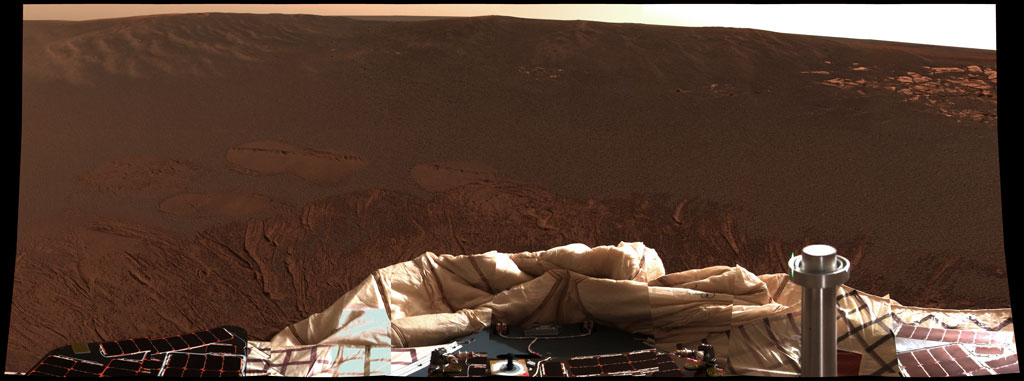 |
| Cat Wu New Mexico State University 2 March 2007 |
| << | >> |
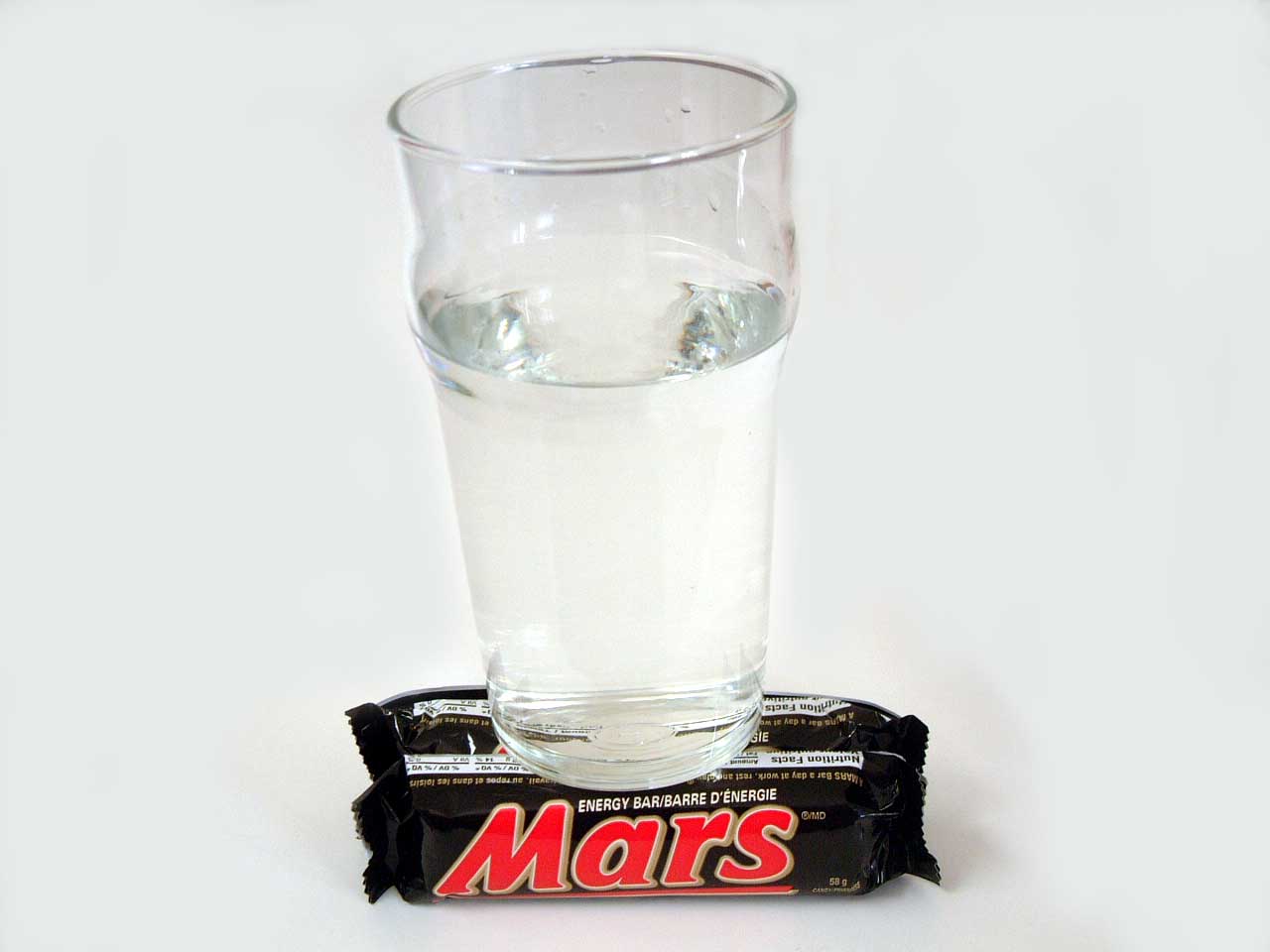 |
| Water on Mars APOD April 1, 2005 |
| << | >> |
 |
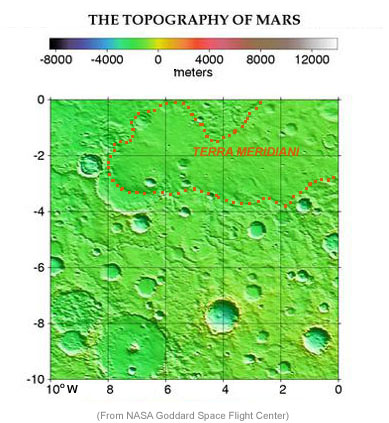 |
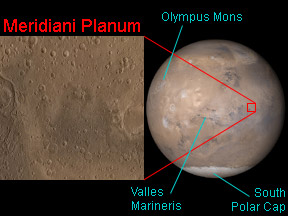 |
Meridiani Planum
| | | |
| << | >> |
 |
| Opportunity | 25 January 2004 (UTC) | Meridiani Planum -- hematite deposits | |
| Spirit | 4 January 2004 (UTC) | Gusev Crater -- former lake | |
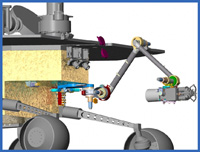 |
 |
| << | >> |
 |
Panoramic Camera (PanCam)
|
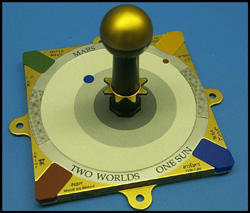 |
PanCam calibrator
|
| << | >> |
 |
Microscopic Imager (MI)
|
 |
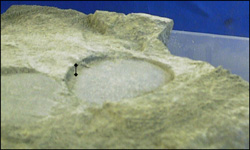 |
Rock Abrasion Tool (RAT)
|
| << | >> |
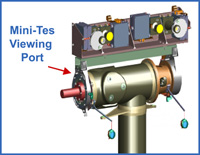 |
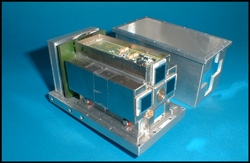 |
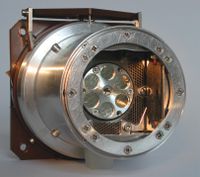 |
Miniature Thermal Emission Spectrometer (Mini-TES)
|
| << | >> |
| Eagle Crater, Meridiani Planum: 3m deep, 20m wide |
 |
| << | >> |
| First Bounce |
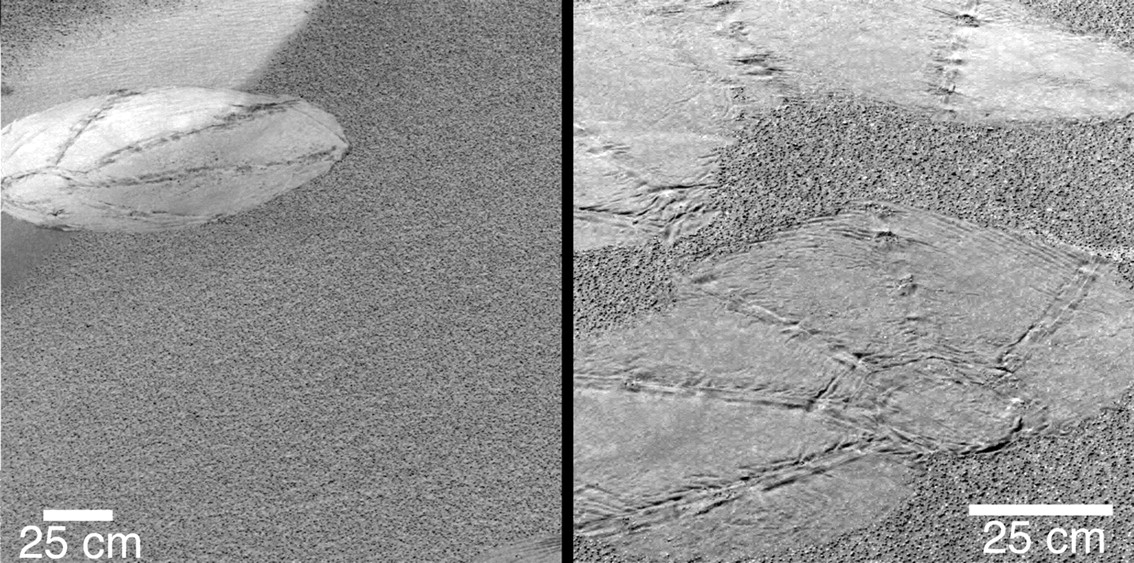 |
| << | >> |
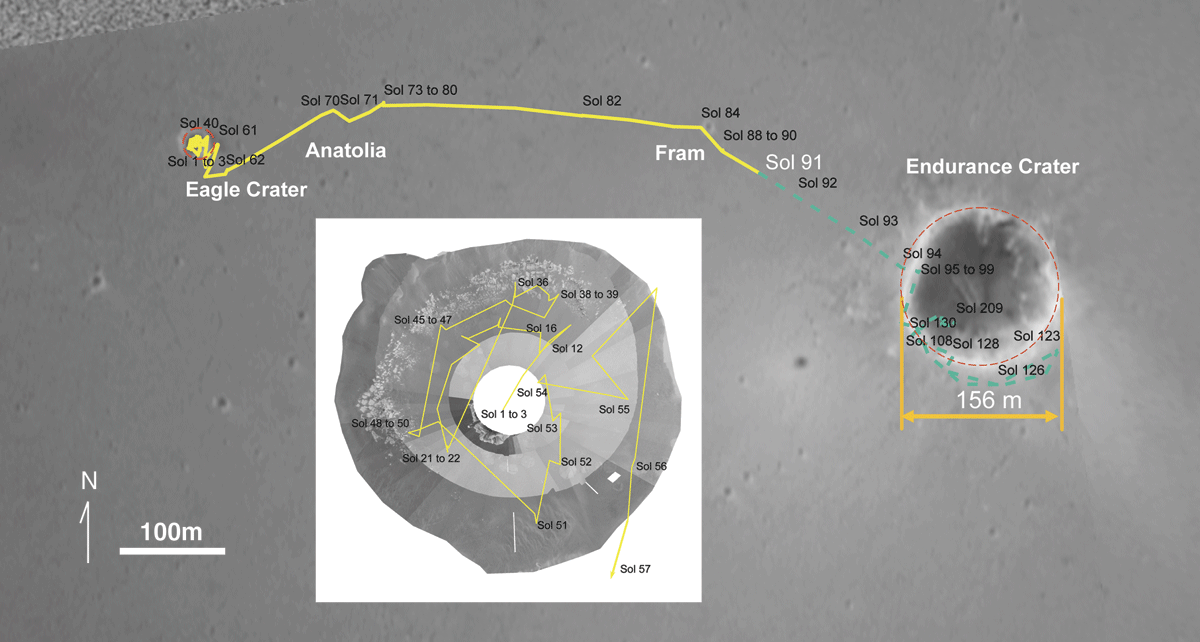 |
| << | >> |
 |
| << | >> |
 |
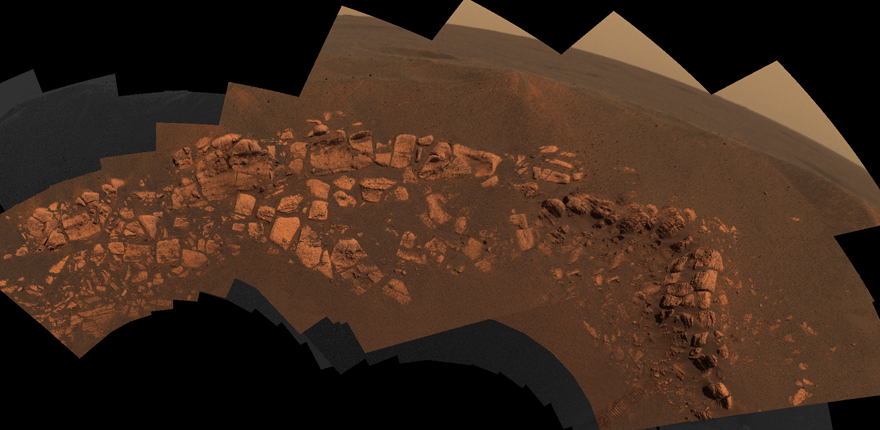 |
Eagle Crater
|
| << | >> |
 |
 |
Planar lamination (bedding)
|
Cross-stratification (cross-bedding, cross-lamination)
|
| << | >> |
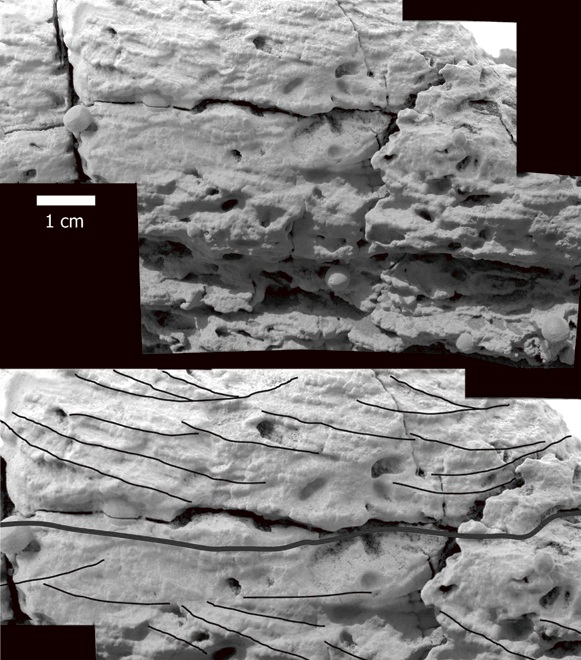 |
 |
Festoon and ripple cross-lamination
|
| << | >> |
 |
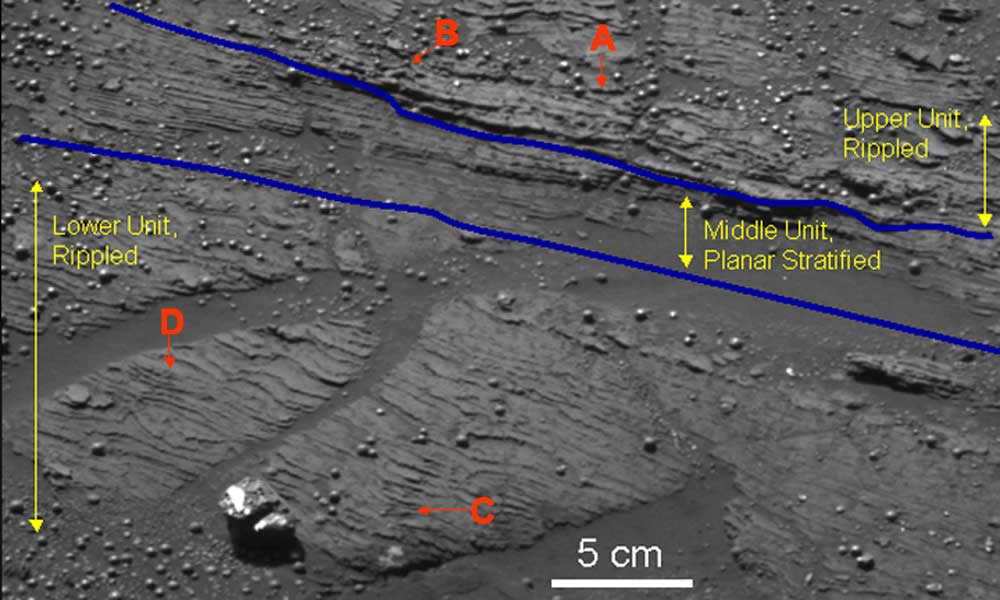 |
|
| << | >> |
 |
| Ripple cross-lamination on Earth |
| << | >> |
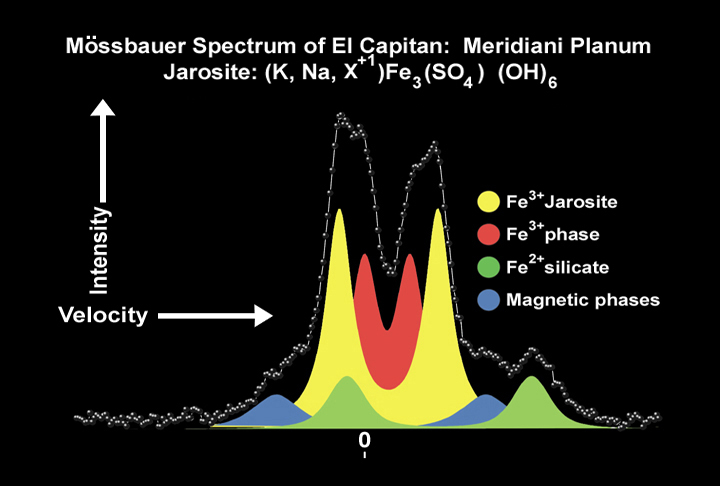 |
| MB: abundance of sulfate salt jarosite, K Fe3(OH)6(SO4)2 |
| << | >> |
 |
| APXS: large amounts of sulfur, SO3, 25% by weight |
| << | >> |
Minerals
|
| Assume all Mg is in Mg sulfate salts and 2/3 of Ca is in Ca sulfate salts. sulfur in Mg,Ca salts + sulfur in jarosite = total amount of sulfur detected |
Water...
|
Bromine-Chlorine ratio
|
| << | >> |
 | |||
| | | |
| << | >> |
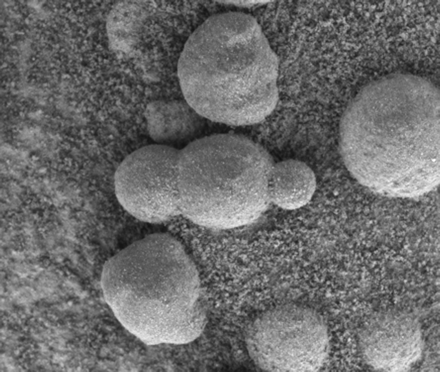 |
 |
|
|
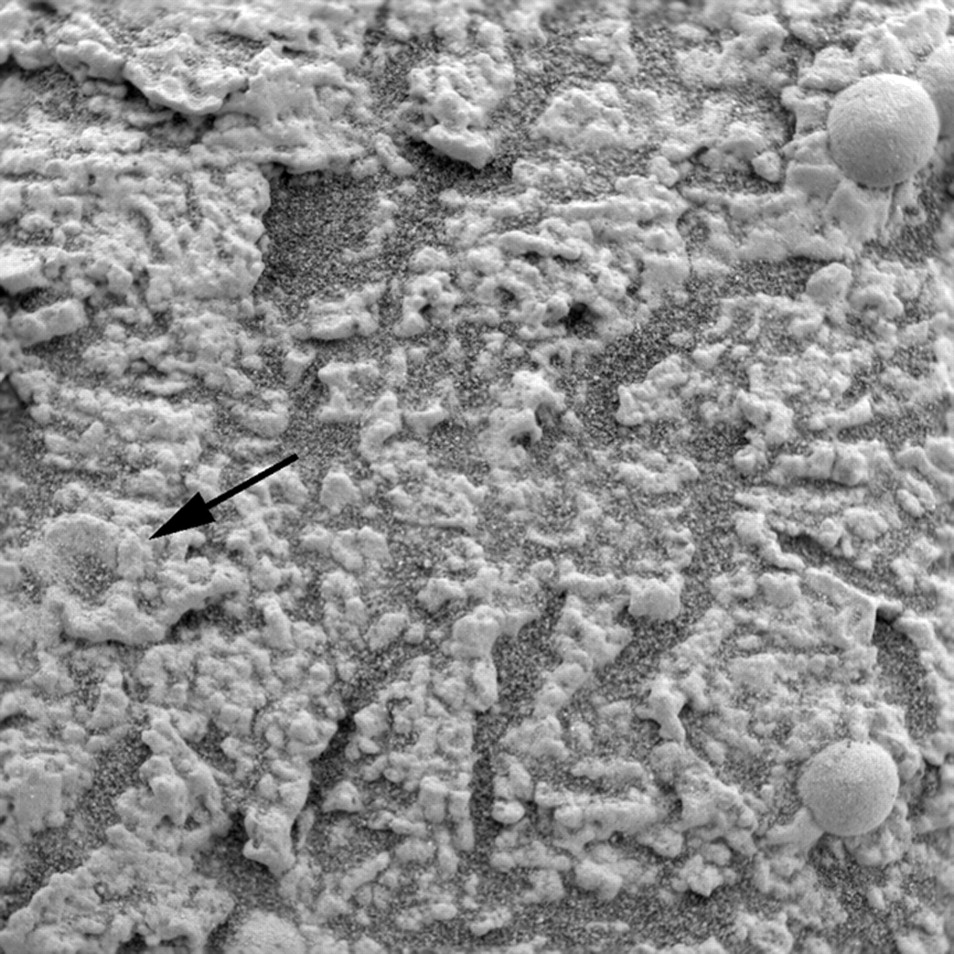 | |
| << | >> |
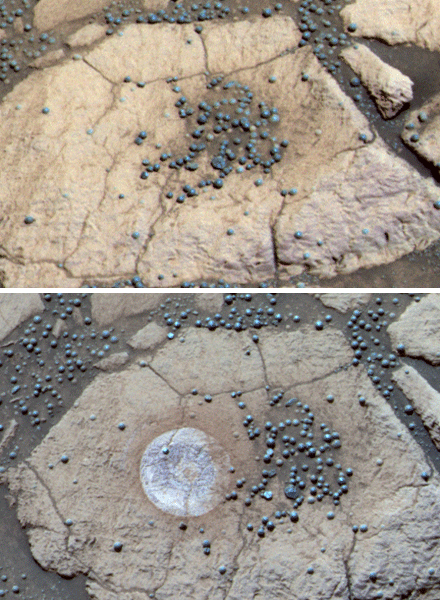 | Hematite, Fe2O3
|
| << | >> |
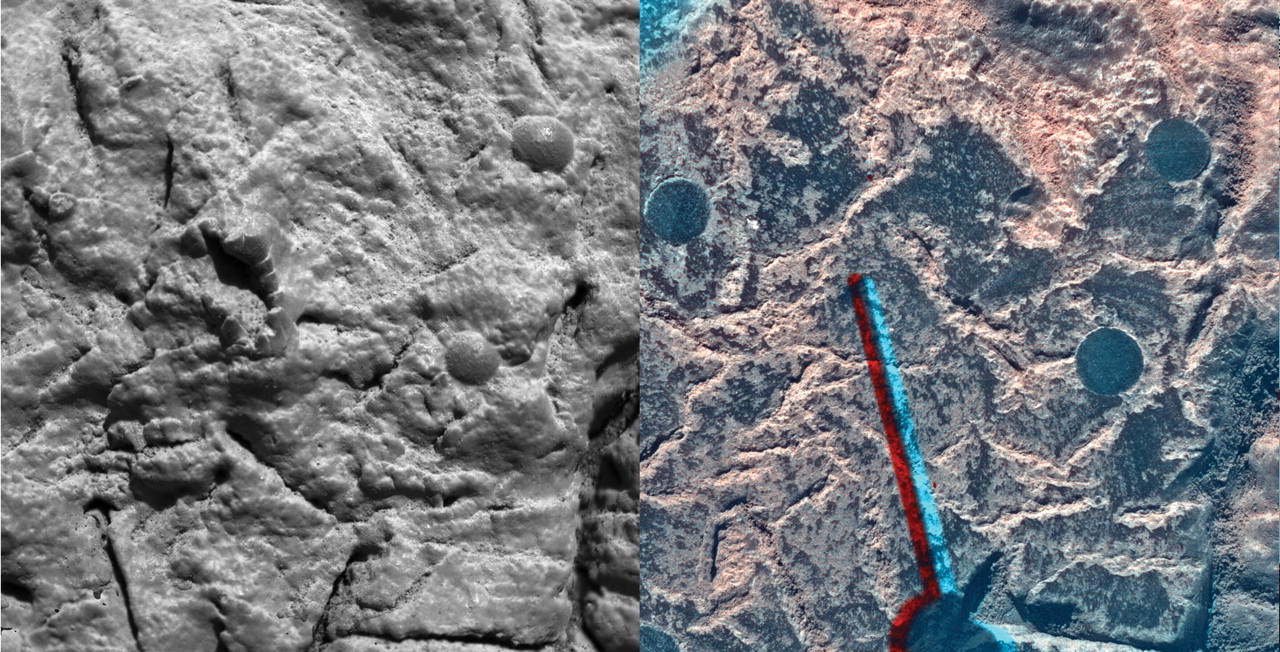 |
|
| << | >> |
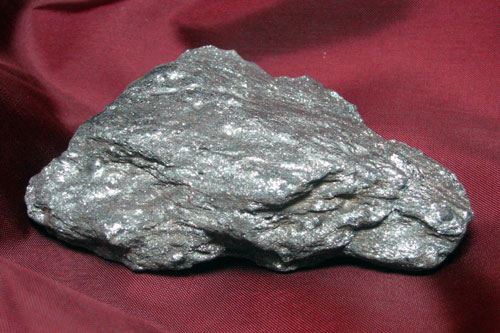 | |||||||
Hematite Spherules:
|
| << | >> |
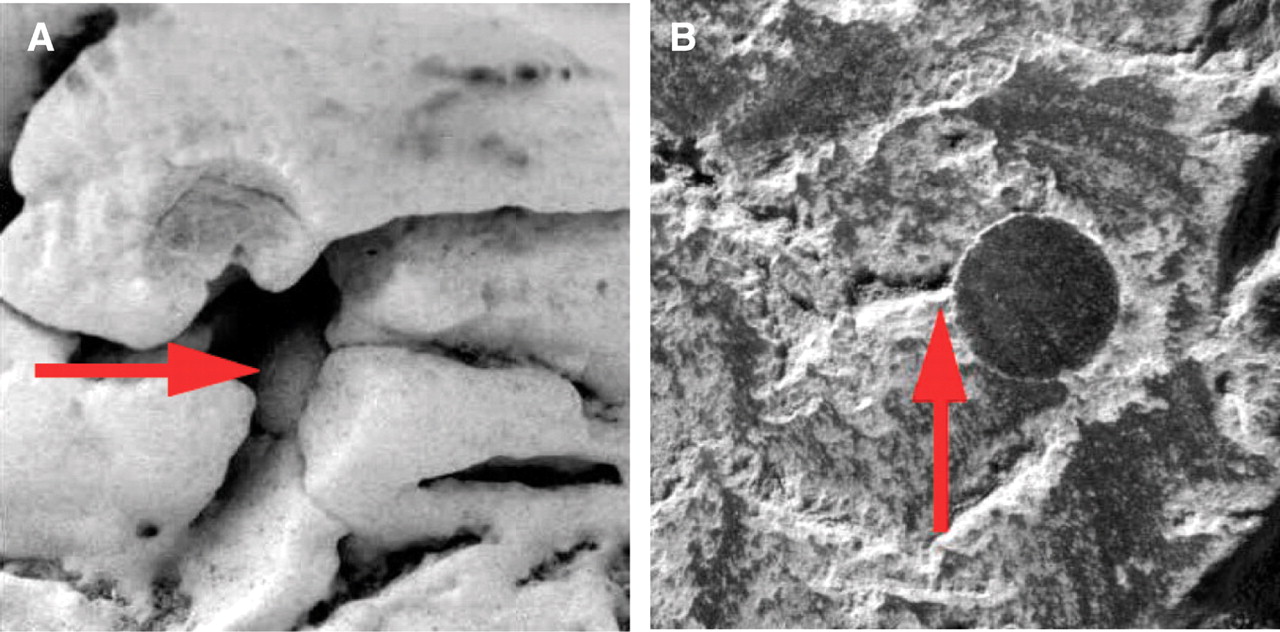 |
Vugs:
|
| << | >> |
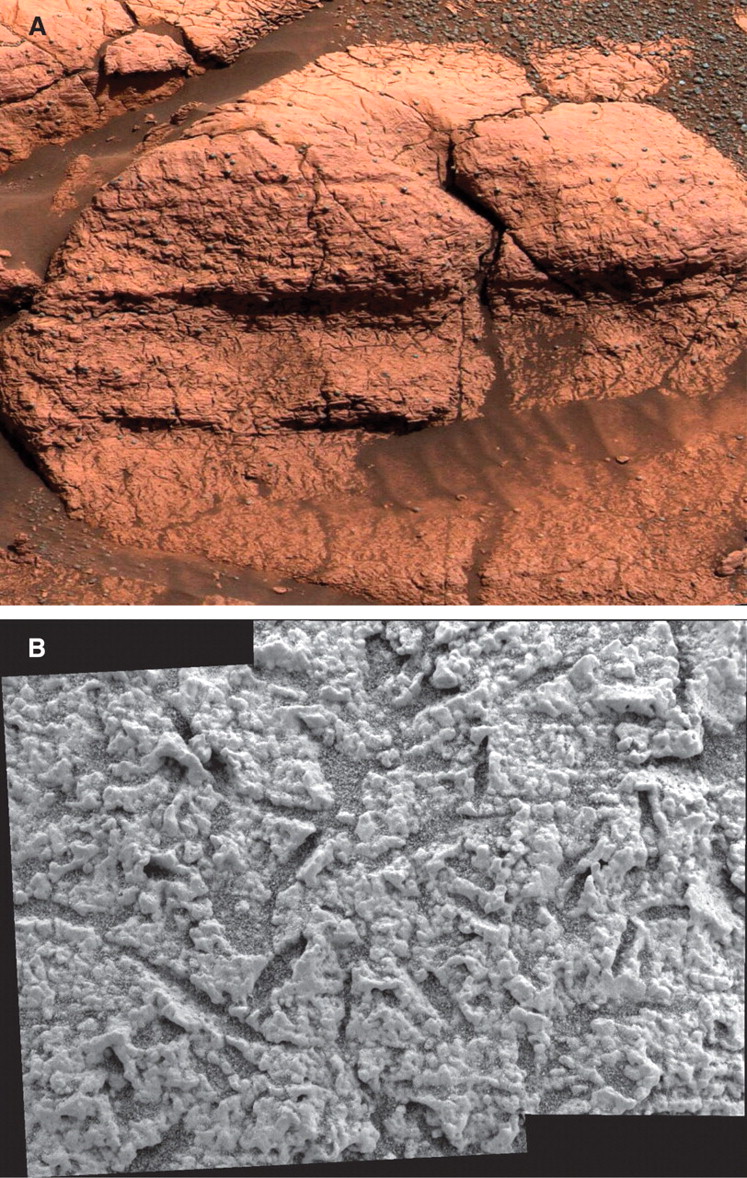 |
 |
| More examples of vugs | |
| << | >> |
Conclusive evidence for water on Mars
Martian History
|
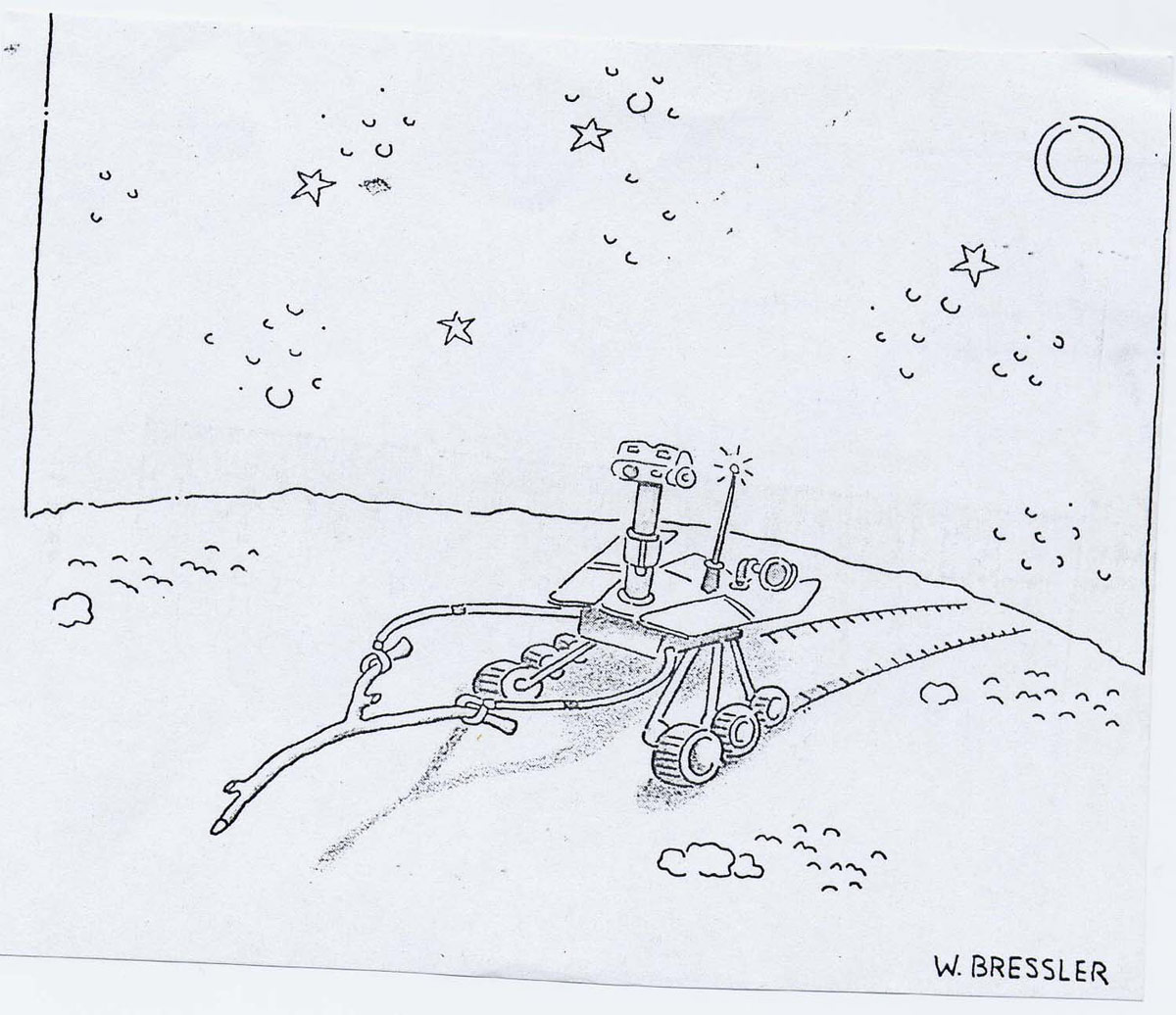 |
| << | >> |
 |
Implications for Life on Mars |  |
|
| << | >> |
Recent Evidence for Current Water
|
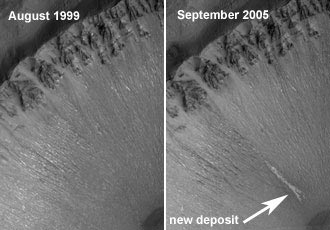 |
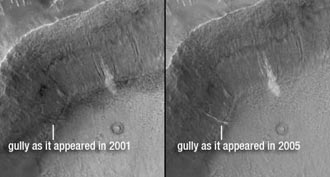 | |
| << |
 |
Primary paper
|
| Cat Wu, Astronomy Department, New Mexico State University | 2 March 2007 |